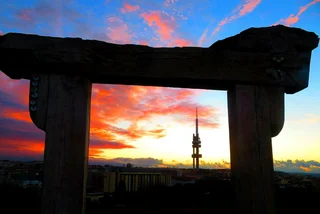Jan Hus is most often remembered for his execution, which happened July 6, 1415. The date is now a national holiday in the Czech Republic.
The focus on his execution for heresy, though, tends to overshadow what he accomplished in his life. You can trace his footsteps in several places in Prague and Bohemia, and find out about his legacy along the way.
PARTNER ARTICLE
Hus was a theologian who called for reforms in the Catholic Church. His efforts predated those of Martin Luther by over a century. Among other things, Hus translated works by reformer John Wycliffe and taught them to university students and preached them to the public.

He opposed the church hierarchy, with the pope at the top. He instead saw the power of Christianity in the people, rather than the clergy.
His early years are a bit of a mystery. His date of birth is unknown and even the year is disputed, with various sources putting it anywhere between 1369 and 1375. Modern scholars tend to cite 1372 as the most likely year.
What is certain is that he came from a poor family in Husinec, a town in South Bohemia. His birthplace there, a rather plain Gothic house, is now a national monument.
The birth house and two adjacent buildings were joined together and renovated into the Master Jan Hus Center. It opened in 2015, the 600th anniversary of Hus’ death. The center presents an overview of the religious reformer’s life and legacy, but most of the texts are in Czech.
Hus didn’t live for very long in Husinec. He was sent to study religion at a monastery – nobody seems to know exactly where – when he was about 10 years old, possibly because his father died. In any event, he distinguished himself in his studies. After a few years made his way to Prague, where he began to study at what is now known as Charles University.
His source of money is not known, but he may have had a wealthy sponsor. He earned a Master’s Degree in 1396, and began teaching two years later. He was ordained in 1400 and first preached at the Church of St. Michael (kostel svatého Michaela) on Michalská Street.

The church was deconsecrated under Emperor Joseph II in 1786. The furnishings were split up among other churches and the building became a warehouse. It now houses art exhibitions and similar events, but has no displays related to Hus. The renovation in the 1990s was widely criticized by preservationists.
He became rector of the university in 1401 and a year later he began preaching at the Bethlehem Chapel, which is the most notable site associated with Hus in Prague. The building, though, is mainly a re-creation. The original fell into disrepair and was mostly destroyed at the end of the 18th century.
A copy was made in the 1950s based on sketches, though some surviving elements were incorporated. Architect Jaroslav Fragner was a key figure in the re-creation, and an art gallery bearing his name and dedicated to architecture is located next to the chapel.
The tide began to turn against Hus and the anti-pope movement in general. By 1412 he was forced to leave Prague to preach in the countryside, but not before declaring that Jesus and not the pope, king, or any council held the highest authority in religious matters.
He also began to write in Czech, as many priests outside of Prague had a poor grasp of Latin.
He sought refuge at the Kozí Hrádek in South Bohemia. It is now a popular castle ruin with an educational trail relating to Hus. He was there in on and off between 1412 and 1414. He wrote several of his most important works there and also preached under a linden tree. He also spent some time in nearby Sezimovo Ústí.

Before going to Konstanz, where he was executed, he preached at Krakovec castle in the western part of Central Bohemia. The castle ruin is open to the public.
At his trial in Konstanz, now part of Germany, he tried to argue the validity of his philosophy but his arguments were rejected. He was burned at the stake and his remains were thrown into the Rhine so his followers would not have a grave to venerate.
A rock marks the spot where Hus and another reformer, Jeroným Pražský, were executed.
The executions were not well received back in Bohemia. Unrest eventually boiled over into the Hussite Wars, which lasted from 1419 to 1434. The Prague neighborhood of Žižkov is named after Hussite military leader Jan Žižka, and many neighborhood streets are named after other Hussite figures.
A battle took place on Vítkov Hill in 1420, with the Hussites defeating the forces of King Sigismund. A statue of Žižka is now on the top of the hill. It was unveiled in 1950, and for a time was the largest equestrian statue in the world.
A statue of Jan Hus was put on Old Town Square in 1915, some 500 years after Hus’ execution. It was designed by Ladislav Šaloun and paid for from public contributions.

The original design showed Hus about to be burned at the stake, but it was eventually toned down to simply show him standing defiantly. The side figures show Hussite warriors, exiles, and a mother with babies, symbolizing the rebirth of the Czech nation.
Tomáš Garrigue Masaryk cited Hus several times in speeches and writings leading up to the establishment of the First Republic of Czechoslovakia in 1918.












 Reading time: 4 minutes
Reading time: 4 minutes 
































